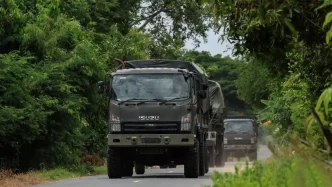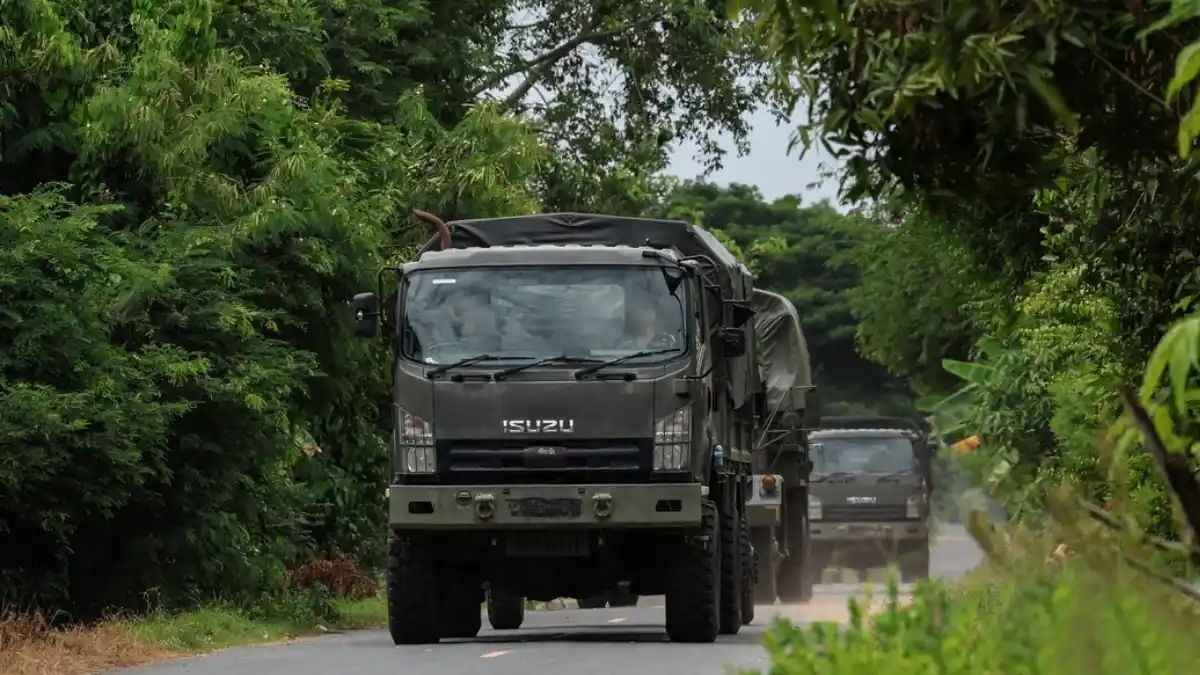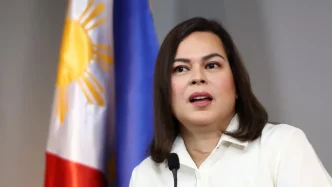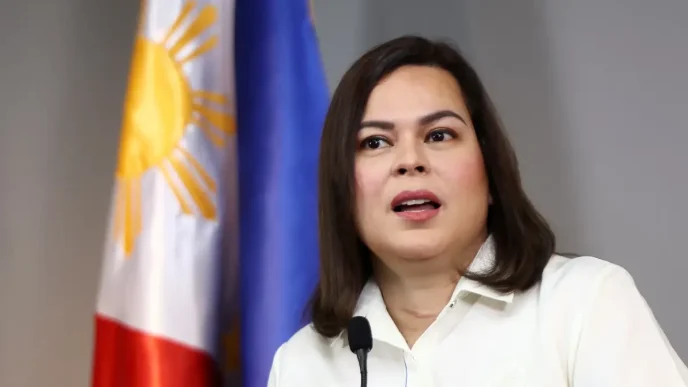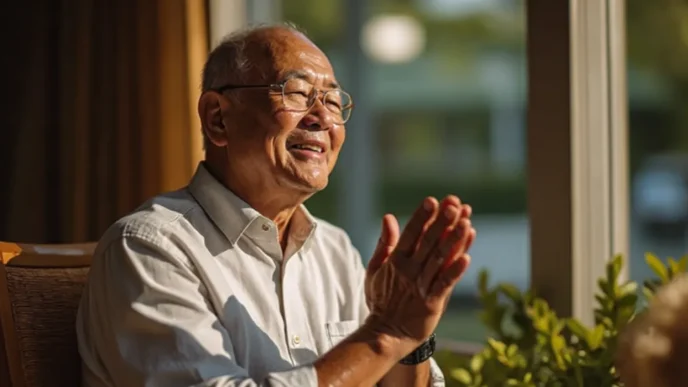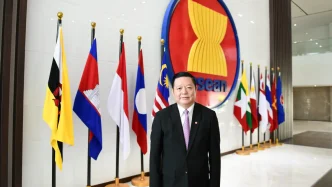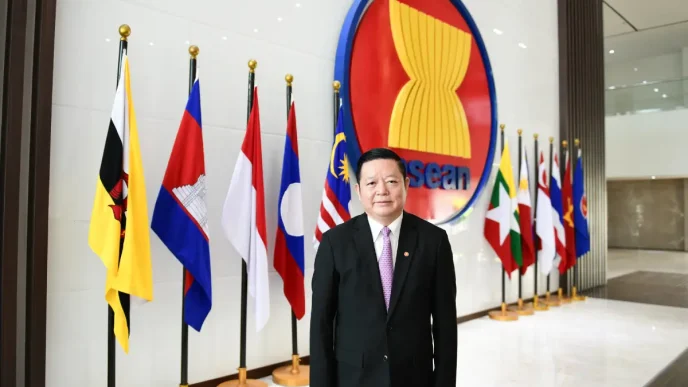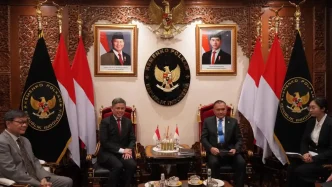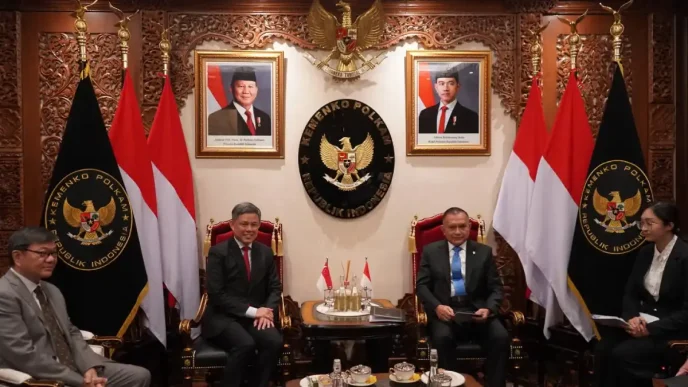In a significant show of international concern, a delegation of over 30 officials from foreign embassies and United Nations agencies visited temporary refugee camps in Cambodia’s Oddar Meanchey and Preah Vihear provinces on August 6 and 7, 2025. The mission, led by Cambodian secretaries of state Kan Pharith and Un Kheang from the Ministry of Foreign Affairs and International Cooperation, aimed to assess the welfare of more than 120,000 displaced individuals uprooted by recent armed clashes with Thailand. Amid a fragile ceasefire, the refugees’ urgent pleas for lasting peace underscored the human toll of the conflict.
A Crisis Unfolding in Cambodia’s Borderlands
The displacement crisis stems from intense armed confrontations between Cambodian and Thai forces from July 24 to 28, 2025, which forced nearly 180,000 people from their homes across five provinces: Preah Vihear, Oddar Meanchey, Banteay Meanchey, Pursat, and Siem Reap. According to figures from Cambodia’s Ministry of National Defence, the number of refugees has since decreased to just over 120,000 as of August 6, with many seeking shelter in makeshift sanctuaries. The reduction suggests some may have returned to their villages, though the situation remains fluid and precarious.
The border region, long a flashpoint for territorial disputes between the two nations, has seen sporadic violence over the years, often tied to overlapping claims near historical sites like the Preah Vihear Temple, a UNESCO World Heritage site. While the root causes of the latest skirmishes remain under discussion, the immediate impact on civilians is undeniable. Families have been separated, livelihoods disrupted, and children’s education halted, as refugees voiced their longing to return home during the delegation’s visit.
International Eyes on a Fragile Ceasefire
The visiting delegation, comprising embassy officials from major global powers including the United States, China, and Russia, as well as representatives from key regional players, signaled a collective international interest in stabilizing the situation. Their presence, alongside UN agency staff, highlighted the gravity of the humanitarian challenge and the broader geopolitical stakes in Southeast Asia, where border tensions can quickly escalate into wider regional concerns.
Pascal Ringwald, the World Health Organization (WHO) representative in Cambodia, offered a cautiously optimistic assessment of the conditions in the camps. “We welcome this ceasefire and hope it will continue. The WHO is mobilizing medical supplies, and we are working closely with the Ministry of Health and partners to ensure that displaced individuals receive quality healthcare services” he stated on August 6, 2025. Ringwald also noted that the arrangements for refugees appeared well-organized, with provisions for healthcare, including preparations for hospital transfers for those in need and treatment for the injured at two facilities in Siem Reap province.
While immediate medical needs are being addressed, the delegation’s broader mission appeared to focus on understanding the scale of displacement and the prospects for a sustainable resolution. The refugees themselves were vocal in their appeals, urging the international community to ensure the ceasefire holds and evolves into a permanent peace. Their primary concerns—returning to their homes and resuming normalcy, especially for their children’s education—echoed through the temporary camps as a poignant reminder of the human cost of conflict.
Humanitarian Efforts and Challenges
The scale of displacement has placed immense pressure on local authorities and humanitarian organizations. Over 120,000 individuals spread across multiple provinces require not only shelter and medical care but also food, clean water, and psychological support after the trauma of fleeing violence. The Cambodian government, in collaboration with UN agencies, has worked to establish temporary sanctuaries, yet the long-term outlook for these displaced communities remains uncertain.
Healthcare provisions, as observed by Ringwald, represent a critical lifeline. The preparation for hospital transfers and the availability of care in Siem Reap indicate a coordinated response to immediate needs. However, the sustainability of such efforts depends on the duration of the ceasefire and the ability to prevent further clashes. Humanitarian workers on the ground have emphasized the importance of uninterrupted access to affected areas, a factor that could be jeopardized if violence resumes.
Beyond physical needs, the psychological impact on displaced families cannot be overlooked. Children, unable to attend school, face an uncertain future, while adults grapple with the loss of homes and livelihoods. Community leaders within the camps have reportedly begun organizing informal education sessions and communal activities to maintain a sense of normalcy, but these efforts are no substitute for a safe return home.
Geopolitical Context and Regional Implications
The border conflict between Cambodia and Thailand is not a new phenomenon. Tensions over territorial boundaries, particularly around the Preah Vihear Temple, have flared intermittently for decades, often fueled by domestic political dynamics in both countries. The temple, perched on a cliff in Preah Vihear province, was awarded to Cambodia by the International Court of Justice in 1962, a ruling that has long been a source of contention in Thailand. Past clashes, notably in 2008 and 2011, resulted in significant casualties and displacement, setting a troubling precedent for the current crisis.
The involvement of major powers and regional actors in the delegation underscores the broader implications of the conflict. For the United States, China, and Russia, stability in Southeast Asia aligns with strategic interests, whether related to trade routes, military influence, or diplomatic leverage. Regional countries, meanwhile, are keenly aware of the potential for border disputes to destabilize the Association of Southeast Asian Nations (ASEAN) framework, which prioritizes non-interference and peaceful resolution of conflicts.
The ceasefire, while a positive step, remains fragile. Both Cambodia and Thailand have accused each other of violating past agreements, and mutual distrust runs deep. International observers have called for mediation, potentially through ASEAN or the UN, to address underlying territorial disputes and prevent future escalations. However, such processes are often slow, and in the interim, civilians bear the brunt of uncertainty.
The Path to Lasting Peace
For the displaced Cambodians in Oddar Meanchey and Preah Vihear, the international delegation’s visit offered a glimmer of hope, a signal that their plight has not gone unnoticed. Yet, their appeals for a full ceasefire and lasting peace reflect a deeper yearning for resolution—one that transcends temporary humanitarian aid and addresses the root causes of their displacement.
The role of the international community in facilitating dialogue between Cambodia and Thailand will be crucial in the coming weeks. Confidence-building measures, such as joint border patrols or third-party monitoring, could help sustain the ceasefire, while longer-term negotiations over disputed territories might pave the way for a permanent settlement. UN agencies, already active on the ground, could expand their mandate to support peacebuilding initiatives alongside humanitarian relief.
Domestically, both governments face pressure to prioritize civilian welfare over nationalist rhetoric. In Cambodia, the displacement crisis has strained resources in border provinces, while in Thailand, public opinion on border policies remains divisive. Balancing these internal dynamics with diplomatic engagement will test the resolve of leaders on both sides.
Looking Ahead
As the international delegation concludes its visit, the situation in Cambodia’s borderlands remains at a critical juncture. The ceasefire holds for now, but its durability is far from assured. For the over 120,000 displaced individuals, each day without violence brings them closer to the possibility of returning home, yet the specter of renewed conflict looms large.
Their voices, amplified during this high-profile visit, serve as a stark reminder of the stakes involved. Will the international community’s attention translate into meaningful action, or will it fade as other global crises take precedence? For the families in Oddar Meanchey and Preah Vihear, the answer to that question will determine whether peace becomes a reality or remains an elusive dream.

